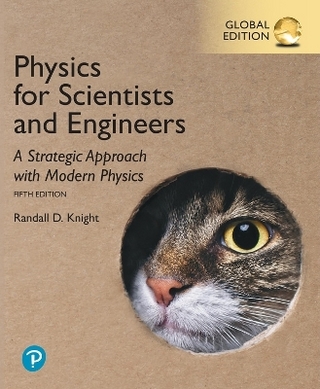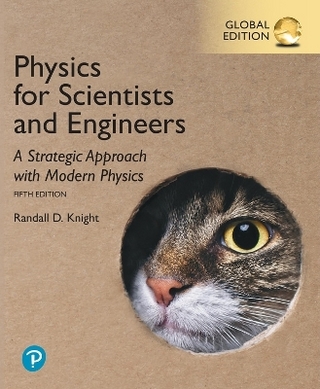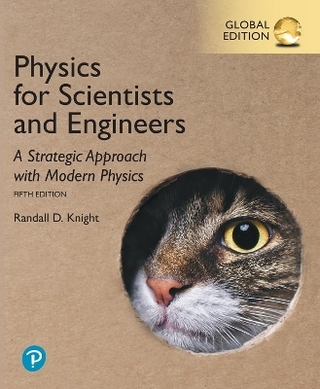
High Temperature Superconductor Bulk Materials – Fundamentals, Processsing, Properties Control, Appliation Aspects
Wiley-VCH Verlag GmbH (Hersteller)
978-3-527-60804-1 (ISBN)
- Keine Verlagsinformationen verfügbar
- Artikel merken
With its comprehensive review of the current knowledge and the future requirements in the field, this book presents all the features of bulk high temperature superconducting materials. Starting from physical and chemical fundamentals, the authors move on to portray methods and problems of materials processing, thoroughly working out the characteristic properties of bulk superconductors in contrast to long conductors and films. They provide a wide range of specific materials characteristics with respect to the latest developments and future applications guiding from fundamentals to practical engineering examples. The authors are all leading international specialists involved in the field of high TC superconductor bulk materials since the beginning. This title is of utmost interest to engineers, scientists, and PhD students working in this field.
Professor Krabbes leads the Bulk Materials Development Group in the Institute of Solid State Research (IFF) as a part of IFW Dresden. He has authored more than 150 technical publications and 20 patents and was awarded the J H van t'Hoff Medal in Physical Chemistry in 1984 and the PASREG Award of Excellence in 1999. His colleague Guenter Fuchs received the PASREG Award for his outstanding scientific achievements in the field of bulk cuprate superconductors in high magnetic fields in 2003. Wolf-Ruediger Canders heads the Institute for Electrical Machines, Traction and Drives (IMAB) at the University of Braunschweig. Both Hardo May and Ryszard Palka are leading scientists at the IMAB.
Preface.1. Fundamentals.1.1 Introduction to Superconductivity in High-temperature Supersconductors (HTSCs).1.1.1 Introductory Remarks.1.1.2 Internal Nomenclature.1.1.3 Critical Currents and Flux Motion in Superconductors.1.1.4 Magnetization Curve of a Type II Superconductor.1.1.5 Determination of Critical Currents from Magnetization Loops.1.1.6 Magnetic Relaxation.1.1.7 Electric Field-Current Relation.1.1.8 Peculiarities of HTSCs in Comparison to Low-Temperature Superconductors.1.1.9 Basic Relations for the Pinning Force and Models for its Calculation.1.2 Features of Bulk HTSCs.1.2.1 Bulk HTSCs of Large Dimensions.1.2.2 Potential of Bulk HTSC for Applications.1.3 Solid-State Chemistry and Crystal Structures of HTSCs.1.3.1 Crystal Structures and Functionality.1.3.2 Chemistry and Doping.1.3.3 Intrinsic Doping: Variations of Stoichiometry.1.3.4 Defect Chemistry.1.3.5 Extrinsic Doping.2. Growth and Melt Processing of YBa2Cu3O7.2.1 Physico-Chemistry of RE-Ba-Cu-O Systems.2.1.1 Phase Diagrams and Fundamental Thermodynamics.2.1.2 Subsolidus Phase Relationships.2.1.3 The Influence of Oxygen on Phase Equilibria: the System Y-Ba-Cu-O.2.1.4 The Oxygen Nonstoichiometry in 123 phases: YBa2Cu3O7-delta (YBa2Cu3O6+x).2.1.5 Phase Relationships in Y-Ba-Cu-O in the solidus and Liquidus Range.2.1.6 Phase Relationships and the Liquidus Surface in Systems Ln-Ba-Cu-O (Ln=Nd,Sm,..).2.1.7 Additional Factors.2.2 Preparation of Polycrystalline RE123 Materials.2.2.1 Synthesis of HTSC Compounds.2.3 Growth of YBa2Cu3O7 Single Crystals.2.4 Processing of "Melt-Textured" YBaCuO Bulk Materials.2.4.1 Experimental Procedure.2.4.2 Mass Flow, Growth Rates, Kinetic and Constitutional Undercoding.2.4.3 Developing Microstructures: Morphology, Inclusions, Defects.2.5 Modified Melt Crystallization Processes For YBCO.2.5.1 Variants of the YBa2Cu3O7-Y2BaCuO5 Melt-Texturing Process.2.5.2 Processing Mixtures of Y123 and Yttria.2.5.3 Processing in Reduced Oxygen Partial Pressure.3. Pinning-Relevant Defects in Bulk YBCO.4. Properties of Bulk YBCO.4.1 Vortex Matter Phase Diagram of Bulk YBCO.4.1.1 Irreversibility Fields.4.1.2 Upper Critical Fields.4.1.3 Vortex Matter Phase Diagram.4.2 Critical Currents and Pinning Force.4.2.1 Transport Measurements.4.2.2 Magnetization Measurements.4.3 Flux Creep.4.3.1 Flux Creep in Bulk YBCO.4.3.2 Reduction of Flux Creep.4.3.3 Pinning Properties from Relaxation Data.4.4 Mechanical Properties.4.4.1 Basic Relations.4.4.2 Mechanical Data for bulk YBCO.4.5 Selected Thermodynamic and Thermal Properties.4.5.1 Symmetry of the Order Parameter.4.5.2 Specific Heat.4.5.3 Thermal Expansion.4.5.4 Thermal Conductivity.5. Trapped Fields.5.1 Low-Temperature Superconductors.5.2 Bulk HTSC at 77 K.5.3 Trapped Field Data at 77 K.5.4 Limitation of Trapped Fields in Bulk YBCO at Lower Temperatures.5.4.1 Magnetic Tensile Stress and Cracking.5.4.2 Thermomagnetic Instabilities.5.5 Magnetizing Superconducting Permanent Magnets by Pulsed Fields.5.6 Numerical Calculations of the Local Critical Current Density from Field Profiles.5.6.1 Inverse Field Problem: Two-Dimensional Estimation.5.6.2 Three-Dimensional Estimation.5.7 Visualization of Inhomogeneities in Bulk Superconductors.6. Improved YBa2Cu3O7-delta Based Bulk Superconductors and Functional Elements.6.1 Improved Pinning Properties.6.1.1 Chemical Modifications in YBa2Cu3O7.6.1.2 Sub-Micro Particles Included in Bulk YBCO.6.1.3 Irradiation Techniques.6.2 Improved Mechanical Properties in YBa2Cu3O7-delta/Ag Composite Materials.6.2.1 Fundamentals of the Processing and Growth of YBCO/Ag Composite Materials.6.2.2 Processing and Results.6.2.3 Properties of Bulk YBaCuO/Ag Composite Materials.6.3 Near Net Shape Processing: Large Sized Bulk Superconductors and Functional Elements.6.3.1 Finishing and Shaping.6.3.2 The Multi-Seed Technique.6.3.3 Rings of 123 Bulk Materials.6.3.4 Joining of Separate Single Grains.6.4 Bulk Materials and Processing Designed for Special Applications.6.4.1 Infiltration Technique and Foams.6.4.2 Long-Length Conductors and Controlled-Resistance materials.6.4.3 Bi2212 Bulk Materials and Rings.6.4.4 Batch Processing of 123 Bulk Materials.7. Alternative Systems.7.1 Impact of Solid Solutions Ln1+yBa2-yCu3O7 delta on Phase Stability and Developing Microstructure.7.2 Advanced Processing of Ln123.7.2.1 Oxygen Potential Control.7.2.2 Oxygen-Controlled Melt Growth Process (OCMG).7.2.3 Isothermal Growth Process at Variable Oxygen Partial Pressure (OCIG).7.2.4 Composition Control in Oxidizing Atmosphere for Growing (CCOG).7.3 Alternative Seeding Techniques.7.4 Further LnBa2Cu3O7-Based Materials.7.5 Ag/LnBaCuO Composites with Large Lanthanide Ions.7.5.1 Fundamentals of Processing.7.5.2 Reactions Near the Seed-Melt Interface.7.5.3 Growth and Properties of Ag/LnBaCuO Composites.8. Peak Effect.8.1 Peak Effect (due to Cluster of Oxygen Vacancies) in Single Crystals.8.2 Peak Effect in Bulk HTSC.9. Very High Trapped Fields in YBCO Permanent Magnets.9.1 Bulk YBCO in Steel Tubes.9.1.1 Magnetic Tensile Stress (in Reinforced YBCO Disks).9.1.2 Trapped Field Measurements.9.2 Resin-Impregnated YBCO.9.3 Trapped Field Data of Steel-reinforced YBCO.9.4 Comparison of Trapped Field Data.10. Engineering Aspects: Field Distribution in Bulk HTSC.10.1 Field Distribution in the Meissner Phase.10.1.1 Field Coding.10.1.2 Zero-Field Cooling.10.2 Field Distribution in the Mixed State.10.2.1 Field Cooling.10.2.2 Zero-Field Cooling.11. Inherently Stable Superconducting Magnetic Bearings.11.1 Principles of Superconducting Bearings.11.1.1 Introduction to Magnetic Levitation.11.1.2 Attributes of Superconducting Magnetic Bearings with Bulk HTSC.11.2 Forces in Superconducting Bearings.11.2.1 Forces in the Meissner and the Mixed State.11.2.2 Maximum Levitational Pressure in Superconducting Bearings.11.3 Force Activation Modes and magnet Systems in Superconducting Bearing.11.3.1 Cooling Modes.11.3.2 Operational Field Cooling with an Offset.11.3.3 Maximum Field Cooling Mode.11.3.4 Magnet Systems for Field Excitation in Superconducting Bearings.11.3.5 Force Characteristics.11.4 Optimized Flux Concentration Systems for Operational-Field Cooling (OFCo).11.4.1 Stray Field Compensation.11.4.2 Dimensional Optimization of System Components.11.5 Parameters Influencing the Forces of Superconducting Bearings.11.5.1 Critical Current Density.11.5.2 Temperature.11.5.3 Flux Creep.11.5.4 HTSC Bulk Elements Composed of Multiple Isolated Grains.11.5.5 Number of Poles of the Excitation System.11.6 Applications of Superconducting Bearings.11.6.1 Bearings for Stationary Levitation.11.6.2 Bearings for Rotary Motion.11.6.3 Bearing for Linear Motion.11.7 Specific Operation Conditions.11.7.1 Precise Positioning of Horizontal Rotating Axis.11.7.2 Bulk HTSCs Cooled Below 77 K.11.7.3 Cooling the Excitation System along with the Superconductor.11.7.4 Dynamics of Rotating Superconducting Bearings.11.8 Numerical Methods.11.8.1 Perfectly Trapped Flux Model (2D).11.8.2 Perfectly Trapped Flux Model (3D).11.8.3 Vector-Controlled Model (2D).12. Applications of Bulk HTSCs in Electromagnetic Energy Converters.12.1 Design Principles.12.2 Basic Demonstration for Application in Electrical Machines - Hysteresis or Induction Machines.12.3 Trapped-Field Machine Designs.12.4 Stator-Excited Machine Designs with Superconducting Shields - The Reluctance Motor with Bulk HTSC.12.5 Machines with Bulk HTSCs - Status and Perspectives.13. Applications in Magnet Technologies and Power Supplies.13.1 Superconducting Permanent Magnets with Extremely High Magnetic Fields.13.1.1 Laboratory Magnets.13.1.2 Magnetic Separators.13.1.3 Sputtering Device.13.1.4 Superconducting Wigglers and Undulators.13.2 High-Temperature Superconducting Current Leads.13.3 Superconducting Fault Current Limiters.13.3.1 Inductive Fault Current Limiters.13.3.2 Resistive Superconducting Fault Current Limiters.13.3.3 Status of High AC Power SFCL Concepts.13.4 High Temperature Superconducting Magnetic Shields.List of Abbreviations.Index.
| Erscheint lt. Verlag | 13.6.2006 |
|---|---|
| Verlagsort | Weinheim |
| Sprache | englisch |
| Gewicht | 10 g |
| Themenwelt | Naturwissenschaften ► Physik / Astronomie |
| Technik ► Elektrotechnik / Energietechnik | |
| Technik ► Maschinenbau | |
| ISBN-10 | 3-527-60804-4 / 3527608044 |
| ISBN-13 | 978-3-527-60804-1 / 9783527608041 |
| Zustand | Neuware |
| Haben Sie eine Frage zum Produkt? |
aus dem Bereich


